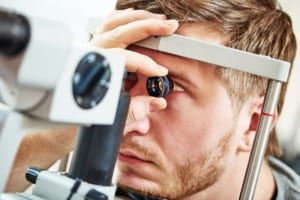
There is no guarantee against developing glaucoma. To some extent, everyone is at risk for the disease. However, those with certain risk factors are more likely to suffer from glaucoma. The top eye specialists at Austin Eye discuss these factors and who is most vulnerable to the disease.
Glaucoma
Glaucoma damages the optic nerve. Generally, fluid buildup within the eye increases pressure, which eventually damages the nerve. Nerve tissue is lost, resulting in loss of peripheral vision (sometimes advancing to central vision loss, too). Glaucoma is a leading cause of blindness.
Family History
If you have a family history of glaucoma, your personal risk increases.
Anyone with a family history should undergo comprehensive eye exams more frequently than those without a family history. A family history of glaucoma may increase your risk of getting the disease as much as ninefold.
Age
Glaucoma is more common in older people. Most patients with glaucoma are 60 years of age or older. However, that doesn’t mean younger adults aren’t affected by the disease; rarely, babies may be born with it.
Vulnerable Communities
Glaucoma is especially prevalent in the Black community. Even younger African Americans are more affected than young Caucasians and individuals of other ethnicities.
Among African Americans, glaucoma is the second leading cause of blindness after cataracts. Overall, the number of African Americans afflicted with glaucoma is six- to eightfold that of Caucasians. This is partly related to the incidence of sickle cell anemia in the Black community, a disease that increases glaucoma risk.
The incidence of glaucoma among people of Asian or Hispanic descent is also higher than among Caucasians. Asian Americans are at an increased risk of angle-closure glaucoma, one of the less common forms of the disease. Native Americans also experience higher levels of angle-closure glaucoma. People of Japanese descent are more likely to develop low-tension glaucoma, characterized by optic nerve damage that occurs while eye pressure remains within a normal range.
Medical Conditions
Certain medical conditions increase glaucoma risk. These include the following:
- Diabetes
- Extreme nearsightedness or farsightedness
- Heart disease
- High intraocular pressure
- Hypertension
- Migraines
- Previous eye surgery or injury
- Sickle cell anemia
- Thin corneas
In addition, the long-term use of corticosteroids, particularly topical steroids such as those found in eyedrops, may contribute to glaucoma development. Patients who must take high levels of corticosteroids for asthma control for prolonged periods of time significantly increase their glaucoma risk.
Contact Us
There is only one way to diagnose glaucoma: through a comprehensive eye examination. If you are at a high risk of developing the condition, contact the eye care specialists at Austin Eye to schedule an exam.







